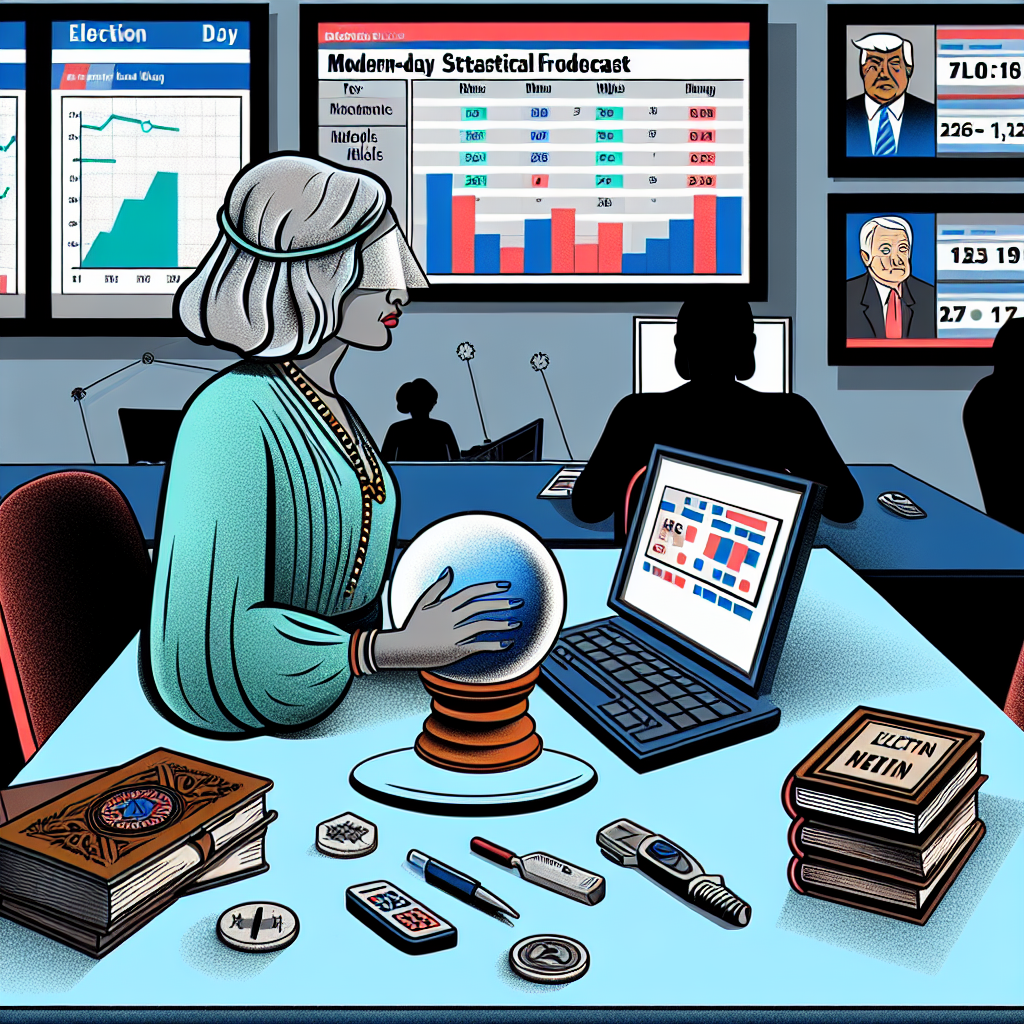
When it comes to predicting U.S. elections, two names consistently stand out: Allan Lichtman and Nate Silver. Each has carved out a distinct niche in the world of political forecasting. In the days leading up to Election Day, tensions always rise, but this year is especially noteworthy as Allen Lichtman, a well-known political historian, firmly stands by his election prediction and publicly challenges Nate Silver’s calculations.
Below, we break down the key aspects of this debate, offer insights into their respective forecasting techniques, and explore why it matters to political observers everywhere.
Who is Allan Lichtman?
Allan Lichtman isn’t just any political pundit. With an impeccable record in predicting the outcomes of U.S. presidential elections since 1984, he’s often referred to as the “Nostradamus of Election Forecasting.” His popularity soared, especially after he successfully predicted the election of Donald Trump in 2016—a decision most experts got wrong.
Lichtman’s system, known as the “13 Keys to the White House,” is not dependent on polls, unlike many other predictors, which makes it uniquely appealing. His method is derived from a series of true or false statements regarding the political environment, economy, and other institutional factors. These 13 keys encompass areas such as:
- Party Mandate
- Social unrest
- Economic Performance
- Foreign or military success
If six or more of these keys are “false,” based on his analysis, he predicts that the incumbent party will lose the White House.
Nate Silver’s Approach
To understand the context of this ongoing disagreement, it’s essential to delve into Nate Silver’s unique methodology. Silver, a statistician and founder of the data analysis website FiveThirtyEight, uses a polling-based system supplemented by statistical models. His approach, which is heavily reliant on polling data, attempts to factor in millions of possible outcomes and constantly updates with new polling data.
While Silver’s methods are considerably more dynamic and data-driven, critics argue they can be overly reliant on short-term information. His models aim to offer a probabilistic forecast—for instance, suggesting that a candidate has a given percentage chance of winning instead of a binary prediction.
Allan Lichtman vs. Nate Silver: The 2024 Election Debate
As Election Day draws near, the schism between Lichtman and Silver’s predictions has caught attention. Allan Lichtman confidently asserts that his historical method, which ignores polling data, is more reliable. On the other hand, Nate Silver maintains that his constantly updated models, which synthesize vast amounts of data, are more comprehensive.
At the heart of the debate is a key question that resonates with political commentators: Should we rely on data-driven models that depend heavily on polling or trust historical patterns?
Lichtman stands firm in his perspective, arguing that polling can be misleading, especially in today’s politically tumultuous and divided era. He consistently emphasizes that what really matters are broad societal indicators, like unrest and economic performance, not the whims showcased in ever-changing numbers.
In contrast, Silver believes that polling provides a more accurate reflection of the immediate mood of the electorate. According to his logic, while historical factors are crucial, they still need to be adjusted in light of real-time data to ensure predictions remain relevant.
Lichtman’s Criticism of Modern Polling
Lichtman has remained vocally critical of overreliance on polling, particularly in the wake of the last few election cycles where pollsters failed to predict outcomes with precision. His skepticism deepened after the 2016 election, where national polls consistently gave Hillary Clinton a clear advantage, only for Donald Trump to pull off a surprising Electoral College win.
In a recent interview, Lichtman pointed out several inherent issues with polling, including:
- Underrepresentation of key demographics
- Sampling biases due to changing communication methods (cell phones vs landlines)
- Fluctuations in turnout projections
His argument is simple: Polls can reflect the sentiment of those who participate in them, but they often fail to capture the larger electorate. Lichtman doesn’t see these issues being fixed anytime soon, which is why he firmly stands by his historical approach.
Nate Silver’s Defense of Polling-Based Models
On the flip side, Nate Silver argues that, while imperfect, polling remains one of the most immediate ways to gauge how voters will make decisions. Silver believes Lichtman’s 13-Keys system can oversimplify the intricate dynamics of a modern election. In contrast, polls, especially when aggregated and adjusted for biases, can offer nuanced insights.
Silver doesn’t deny that polling is fallible. However, he emphasizes how much his models have evolved to include corrections and compensations for known biases.
He also rebuts Lichtman’s criticism by pointing out that polls are just one data source in a broader, more complex equation. In his models, he incorporates multiple layers of information, including demographics, historical precedents, and other socio-political factors.
Why Does This Debate Matter?
Beyond a philosophical disagreement, the split between Lichtman and Silver echoes a broader debate in the fields of data science, polling, and political analysis. As we’ve seen with the polarizing results of recent elections, forecasting victory in today’s political climate is harder than ever.
As the modern information landscape becomes even more fragmented, voters, commentators, and analysts alike are stuck in a dilemma: Should they trust polls or historical patterns? There’s no denying that both methods have their strengths and weaknesses, but it’s highly likely that forecasting itself will continue to evolve.
In the meantime, the vast divide between Silver and Lichtman offers a vivid snapshot of two competing schools of thought in the age of political uncertainty.
What Lies Ahead?
Heading into the 2024 election, political observers are keenly watching how both Lichtman’s and Silver’s methods perform in real-time. Will Lichtman’s well-tuned track record outshine Silver’s data-driven approach once again? Or will the dynamism of polling models better interpret the complex nature of modern-day elections?
Ultimately, only time will tell. As for who will be proven right in their prediction, Election Day always serves as the ultimate arbiter. Regardless, both Lichtman and Silver’s contributions to the realm of election forecasting will continue to be a major focal point moving forward.
Conclusion
The rift between Allan Lichtman and Nate Silver provides a captivating look at different approaches to understanding election results—one grounded in historical analysis, the other in modern-day data. While Lichtman finds polls unreliable, Silver remains committed to improving and refining his models. Both predictions may offer valuable insights, but it’s up to the public to determine which aligns closer to reality.
In the world of election forecasting, one thing is clear: whether you’re a fan of historical patterns or statistical models, the need for careful, nuanced predictions will only grow stronger.
“`
